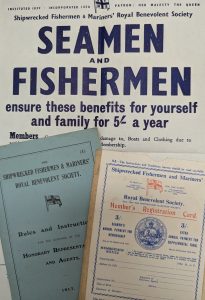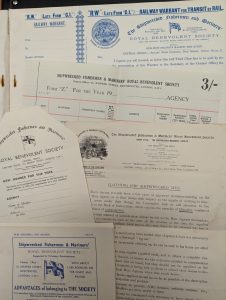Honouring a Lifeline – The Society’s Enduring Support for Shetland’s Seafaring Families
The Shipwrecked Mariners’ Society’s record of care for seafaring families has stretched the length and breadth of Britain’s shores for 185 years. Few places reflect this lasting impact more vividly than Shetland – a community deeply entwined with the fortunes, dangers and tragedies of the sea.
In the summer edition of “Coontin Kin,” the magazine of the Shetland Family History Society, historian Alan Beattie – whose own family links span several generations of local shipping – explores the Society’s unique contribution to Shetland’s seafaring heritage.
 Responding to Tragedy
Responding to Tragedy
The hazardous nature of fishing and shipping has shaped Shetland’s story for centuries, with tragic losses in the 19th and early 20th centuries leaving deep scars on the islands. In 1839, moved by such disasters, the Shipwrecked Fishermen and Mariners’ Royal Benevolent Society (now known simply as the Shipwrecked Mariners’ Society) was launched to provide practical relief and comfort to those left behind. From the beginning, Shetland was included among the far-flung outposts supported by the Society’s growing network of voluntary agents.
By the late 1840s, hundreds of Shetland mariners proudly carried their Society medallions – tokens of membership sometimes worn around the neck for identification if disaster struck. The local agents were often postmasters, merchants or ship agents – trusted figures who maintained subscriptions, administered relief, and corresponded with London on behalf of those in need. Legendary island names resound through the records: William Rae Duncan, Lerwick postmaster and the first resident Shetland agent, later followed by Joseph Leask and the local shipping firm Hay & Co.
Lifelines in Action

The Society’s impact is captured in remarkable stories from newspaper archives. In 1840, a Shetland fishing boat, blown off course by a gale, survived a harrowing 36-hour ordeal before landing, exhausted, on the coast of Norway. With the help of the British Consul and, crucially, the Shipwrecked Mariners’ Society, the crew were clothed, fed and made their way home. In other cases, the Society responded rapidly to support widows and orphans, as seen when two boats were lost on a July day in 1842, leaving dozens of dependents.
By the late 19th century, agents in Shetland were distributing thousands of pounds in grants at a time when the local membership could only raise a fraction of the sum – evidence of the Society’s broad charitable reach. Typical support included annual grants to widows and children, help for elderly parents, and funds for men stranded or injured far from home.
A Living Legacy
Archival ledgers in Shetland still preserve poignant glimpses of the Society’s influence: lists of members, records of appeals and relief provided, and names of donors who rallied to the cause. Alan Beattie’s article highlights these precious sources and testifies to the Society’s vital role not only in providing material support, but in knitting together the maritime community in times of hardship.
That tradition continues today. Last year we received nearly 900 new applications for assistance, and distributed grants amounting to £1.4 million in over 2,000 cases of need.
With heartfelt thanks to Alan Beattie and the Shetland Family History Society for sharing this chapter of mutual history. The full article is available in the latest issue of “Coontin Kin.” Shetlanders and all whose lives have been shaped by the sea can take pride in the legacy of kindness and solidarity that endures through the Shipwrecked Mariners’ Society to this day.
For more about the Society’s ongoing work, or to discover how you can support seafarers in distress, please visit www.shipwreckedmariners.org.uk.


